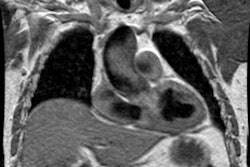AJR Am J Roentgenol 1996 Oct;167(4):937-940. Pulmonary venoocclusive disease: CT findings in eight patients.
Swensen SJ, Tashjian JH, Myers JL, Engeler CE, Patz EF, Edwards WD, Douglas WW
OBJECTIVE: The objective of the study was to describe the CT findings of pulmonary venoocclusive disease. MATERIALS AND METHODS: Eight patients with CT scans of the thorax and a diagnosis of pulmonary venoocclusive disease were identified from three institutions. The six males and two females had a mean age of 32 years old (range, 5-58 years old). All scans were evaluated with consensus reading by two chest radiologists. Lung parenchyma were assessed for the type and distribution of disease. Bronchi, pleura, hila, mediastina, and chest walls were evaluated for abnormalities. Pathologic specimens from five patients were reviewed and specifically correlated with the radiologic findings. RESULTS: Seven of the eight patients had interlobular septal thickening. All eight patients had regions of ground-glass opacity. Four of the eight patients had a mosaic pattern of lung attenuation. No enlarged hilar or mediastinal nodes were revealed. Five patients had bilateral pleural effusions. CONCLUSION: The most common CT findings in these eight patients with pulmonary venoocclusive disease were smooth interlobular septal thickening, diffuse multifocal regions of ground-glass opacity, pleural effusions, enlarged central pulmonary arteries, and pulmonary veins of normal caliber. Four patients had a mosaic pattern of lung attenuation on the CT scans. These findings are highly suggestive of pulmonary venoocclusive disease and may be helpful in difficult cases. Definitive diagnosis requires lung biopsy.
PMID: 8819387, MUID: 96416592






